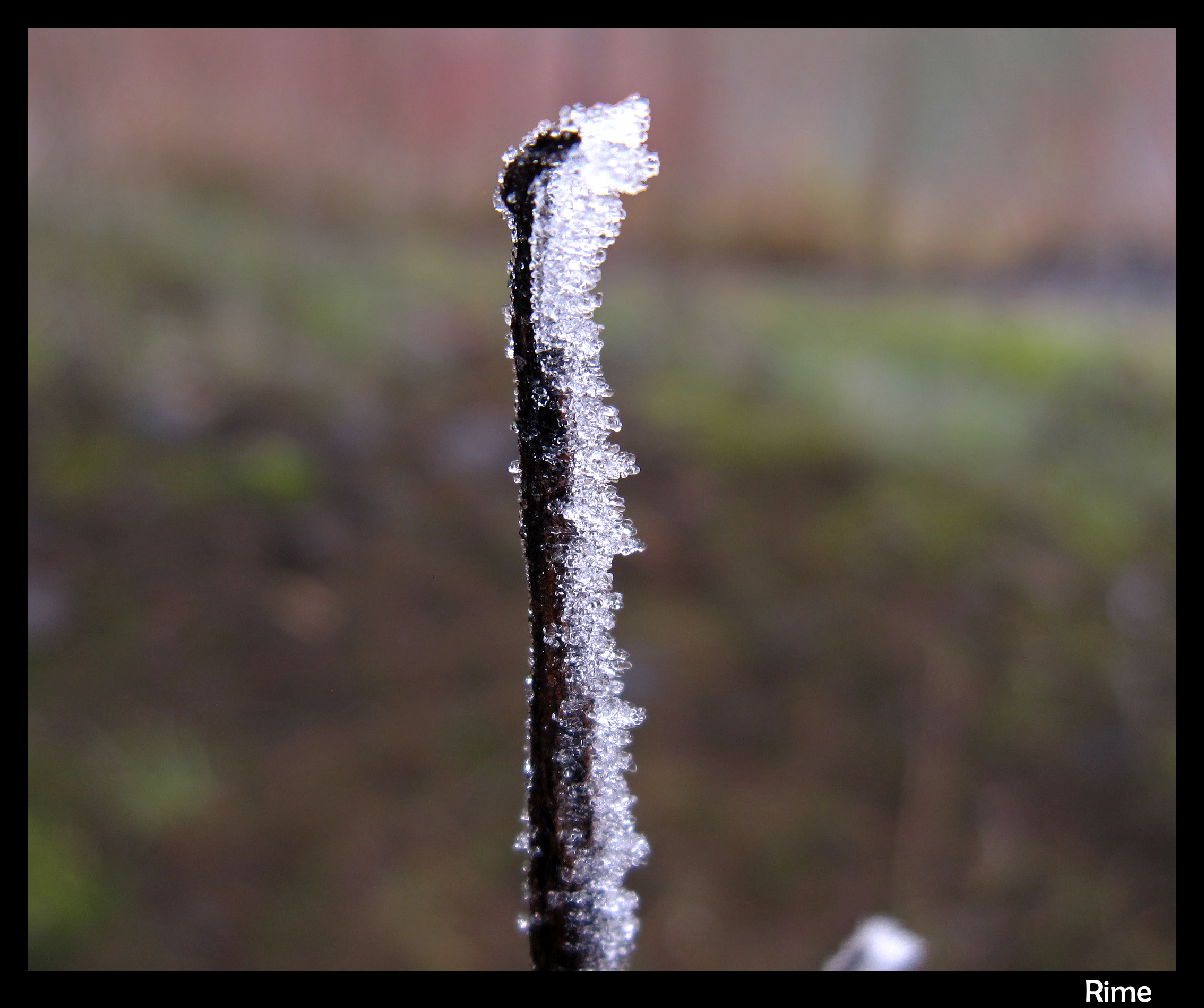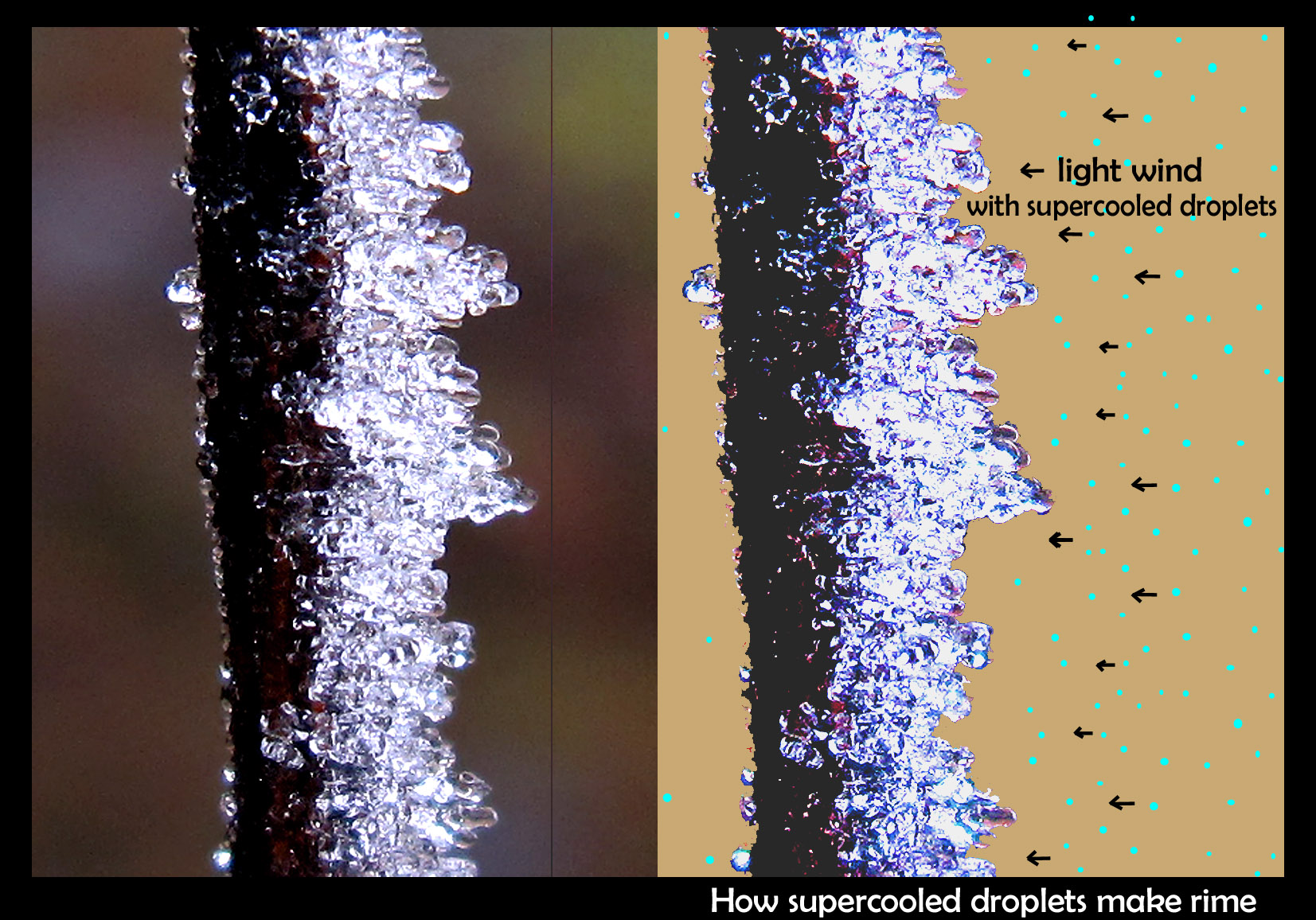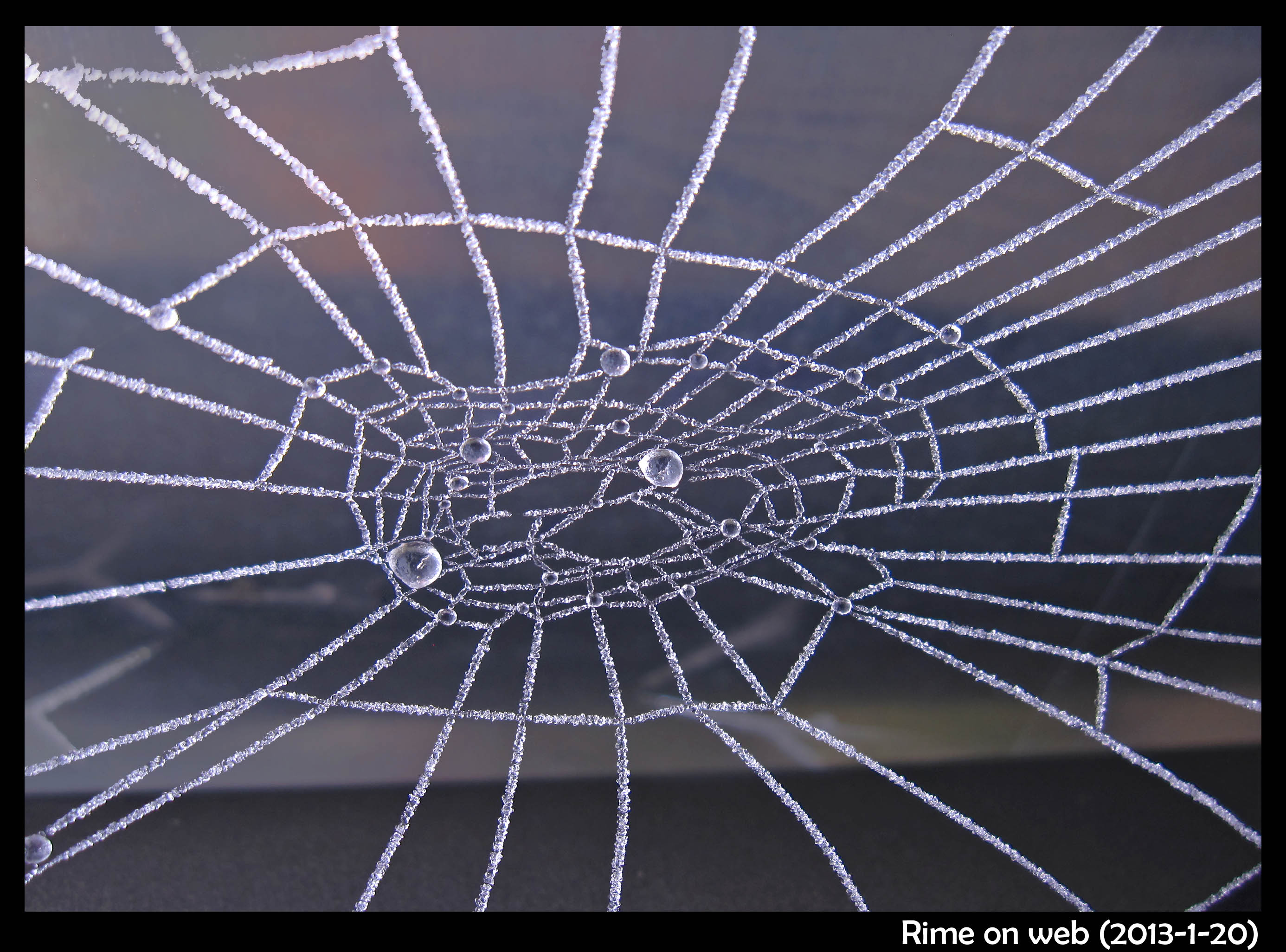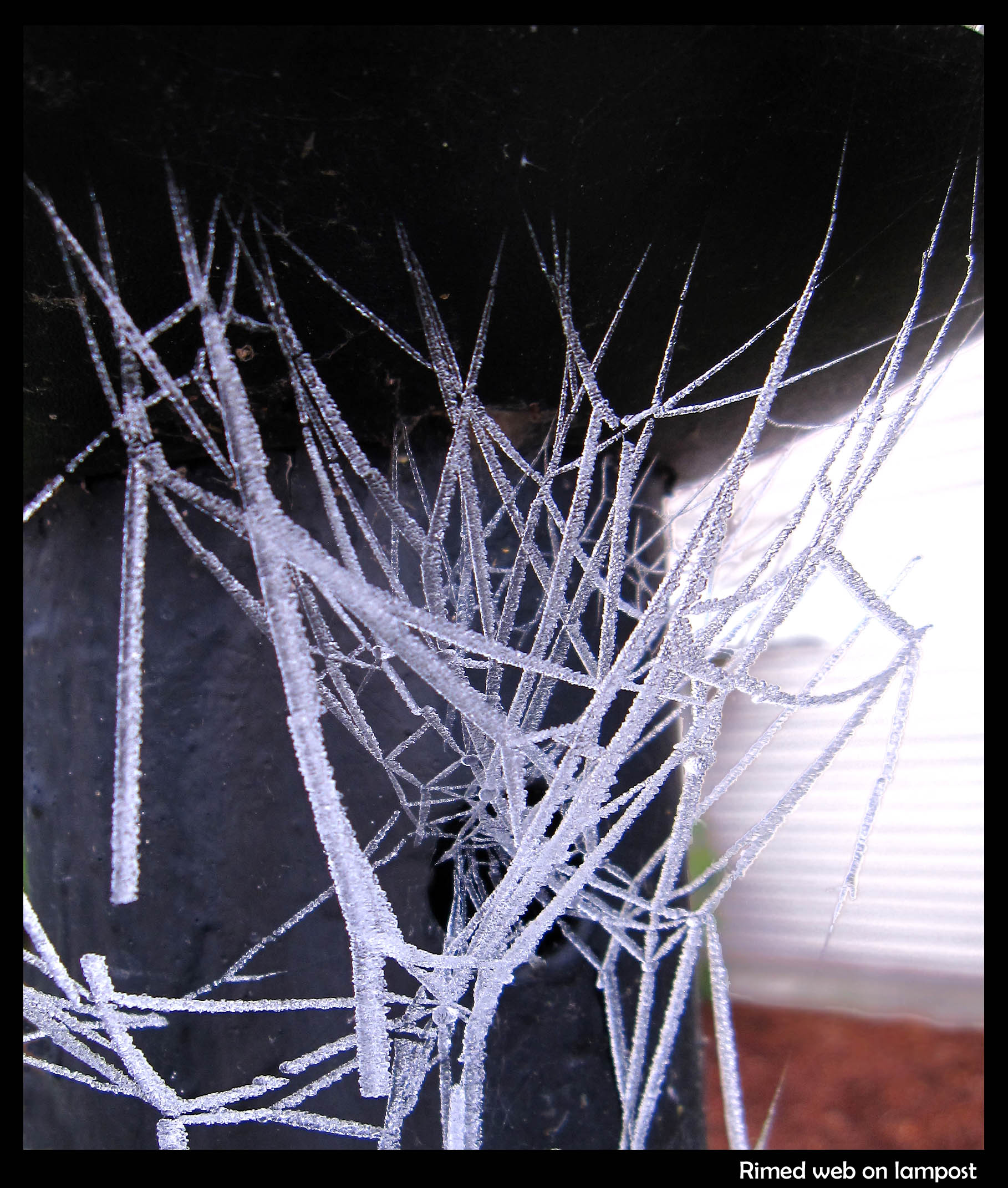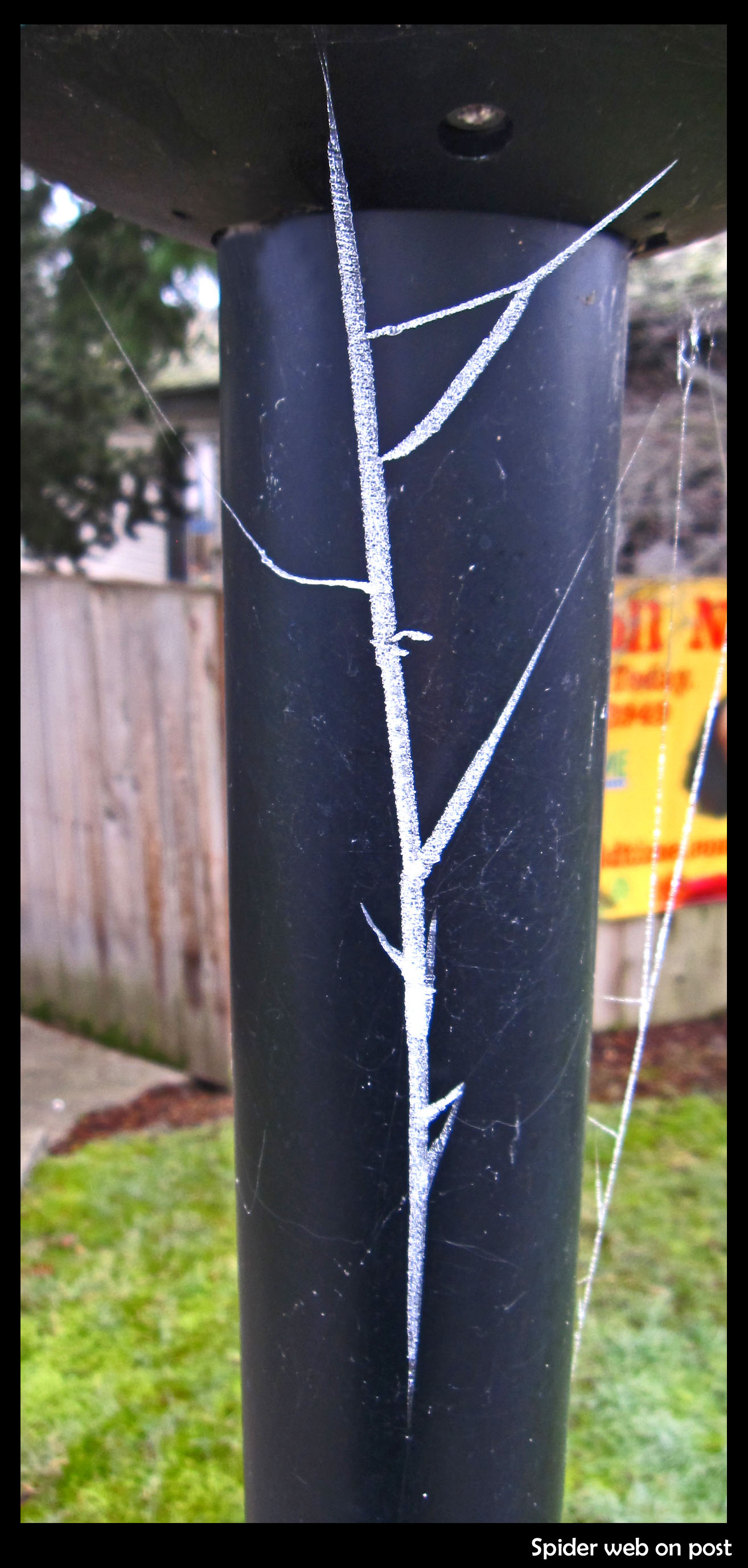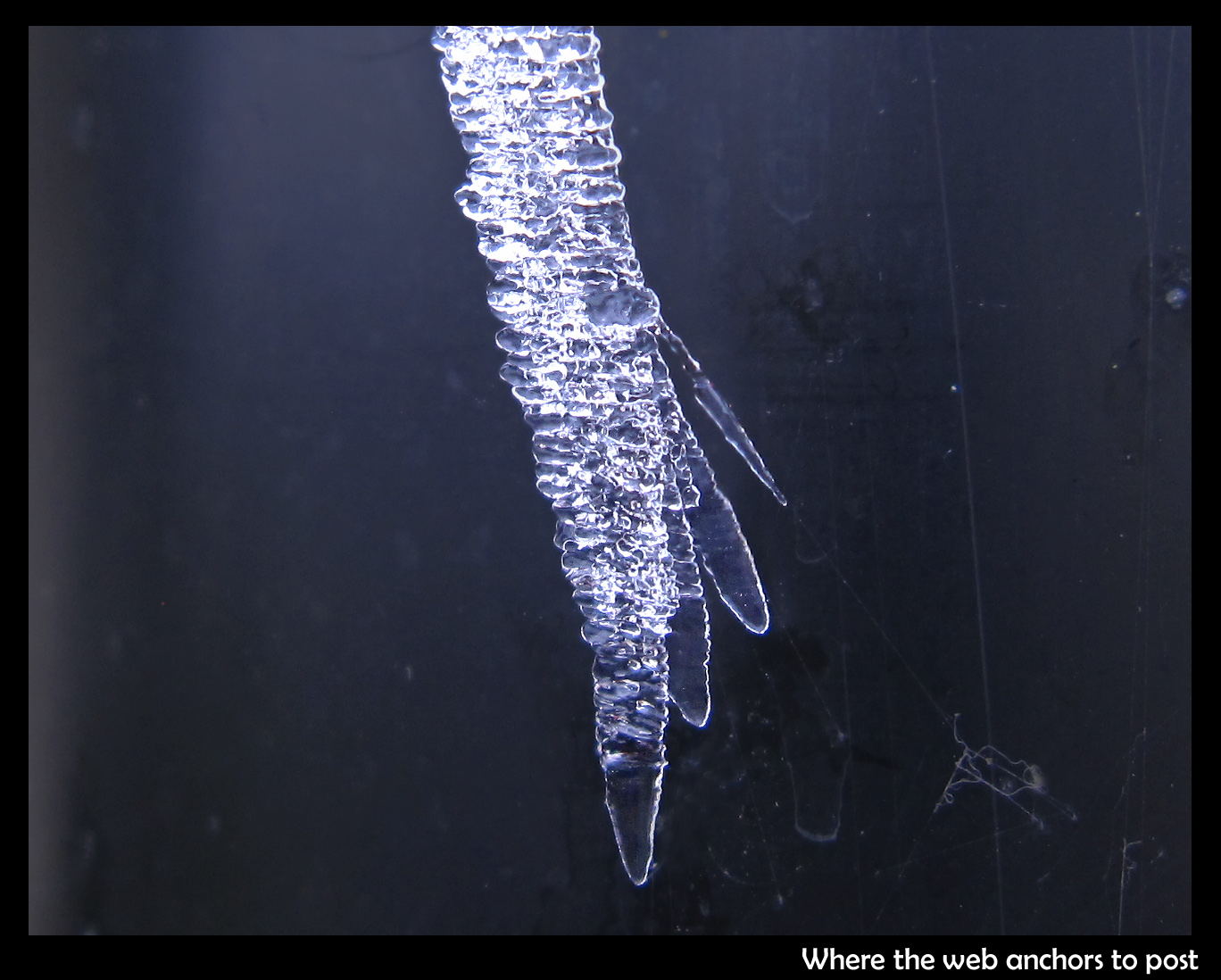| « Rime falling from branches | Frost Days and Ice Days: Declining Numbers over the Century » |
Rime, freezing fog, and crystalline spider webs
The Pacific Northwest has been foggy a lot lately, but the fog droplets have been subzero, or supercooled. When such fog droplets hit an object, they almost always freeze. The resulting frozen aggregate is called rime. Freezing fogs make rime.
The resulting rime formations may look like hoar frost, or even snow, from a distance. But close up the special features of rime become apparent.
As the above close-up shows, the rime deposits are not facetted like hoarfrost. Two reasons for this: one, only one type of facet, the basal facet, can be expressed while the crystal grows from its melt, but the more important reason, reason two, is that the freezing process largely just fills out the droplet, or smeared-out droplet, with ice even if a facet had existed within the meltwater.
The close-up above also shows how the ice is built up mainly on one side. This side faces the wind, which in this case was a very light wind, not even noticeable. Also, as show in the sketch on the right, the icy rime blobs are likely much larger than the droplets. Each blob is made out of a succession of droplets that struck and then froze as they got smeared out by capillary forces. The more supercooled the fog, the less the smearing.
The rime looked pretty on the conifers, giving them a silvery look. But the most interesting things for me were the spiderwebs.
When the droplets first hit the web, they probably didn't freeze right away. Before freezing, some likely flowed along the web and clustered into larger drops. This process may have made the deposits thicker in some areas of the web.
As seen below, the rime deposits were often thicker near web-strand intersections and thinner near attachment points. Some of this is probably due to the droplets flowing along the ice, pulled by capillary forces, before freezing. Intersections would have greater pull on the as-yet-unfrozen water because the surface can pull from more directions.
And this might also help explain why the ice tapers down where the web strands attach to the post.
Melt-refreeze cycles undoubtedly also influence the shape of these deposits, as would shadowing effects and the existence of warmer objects nearby. I cannot claim to be able to explain all that I saw. But just as I see many curious things here I cannot explain, I am also sure that I’ll be surprised by even more curious things in future riming events.
-JN
